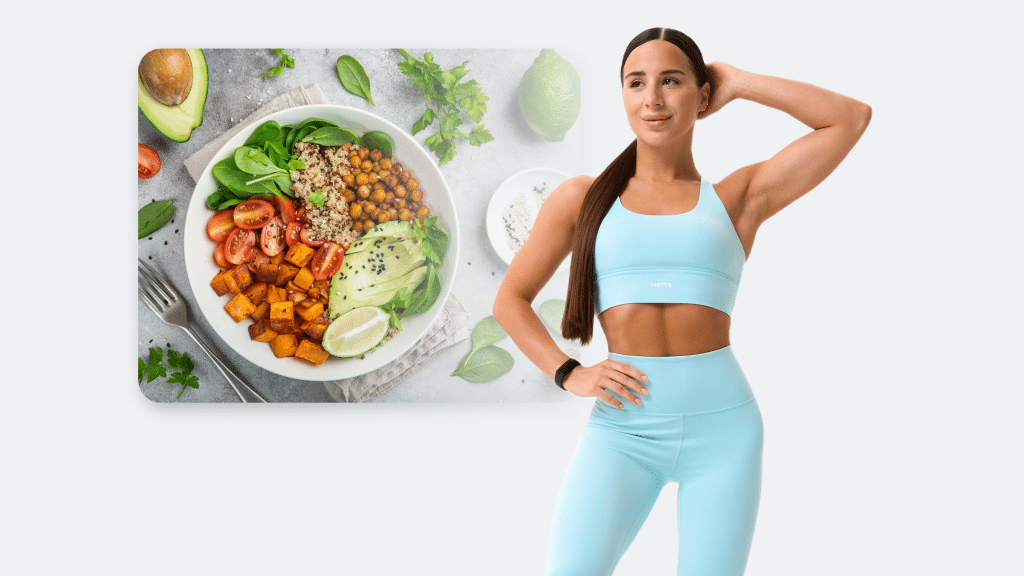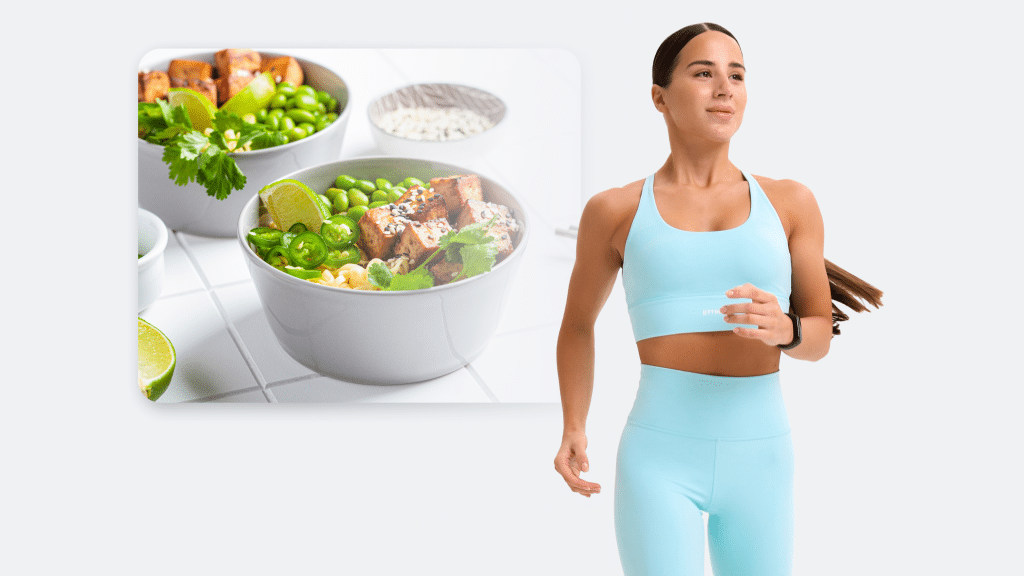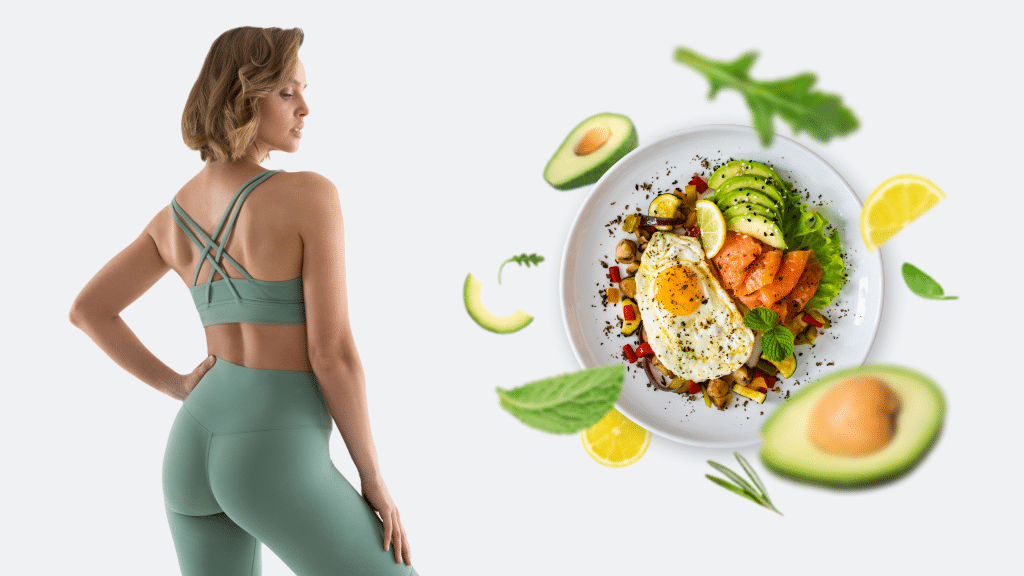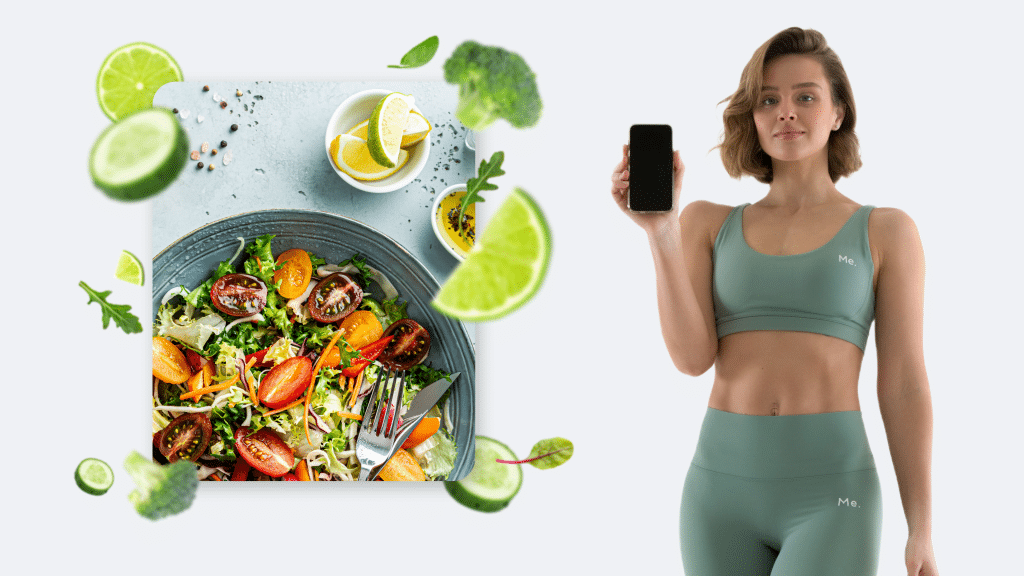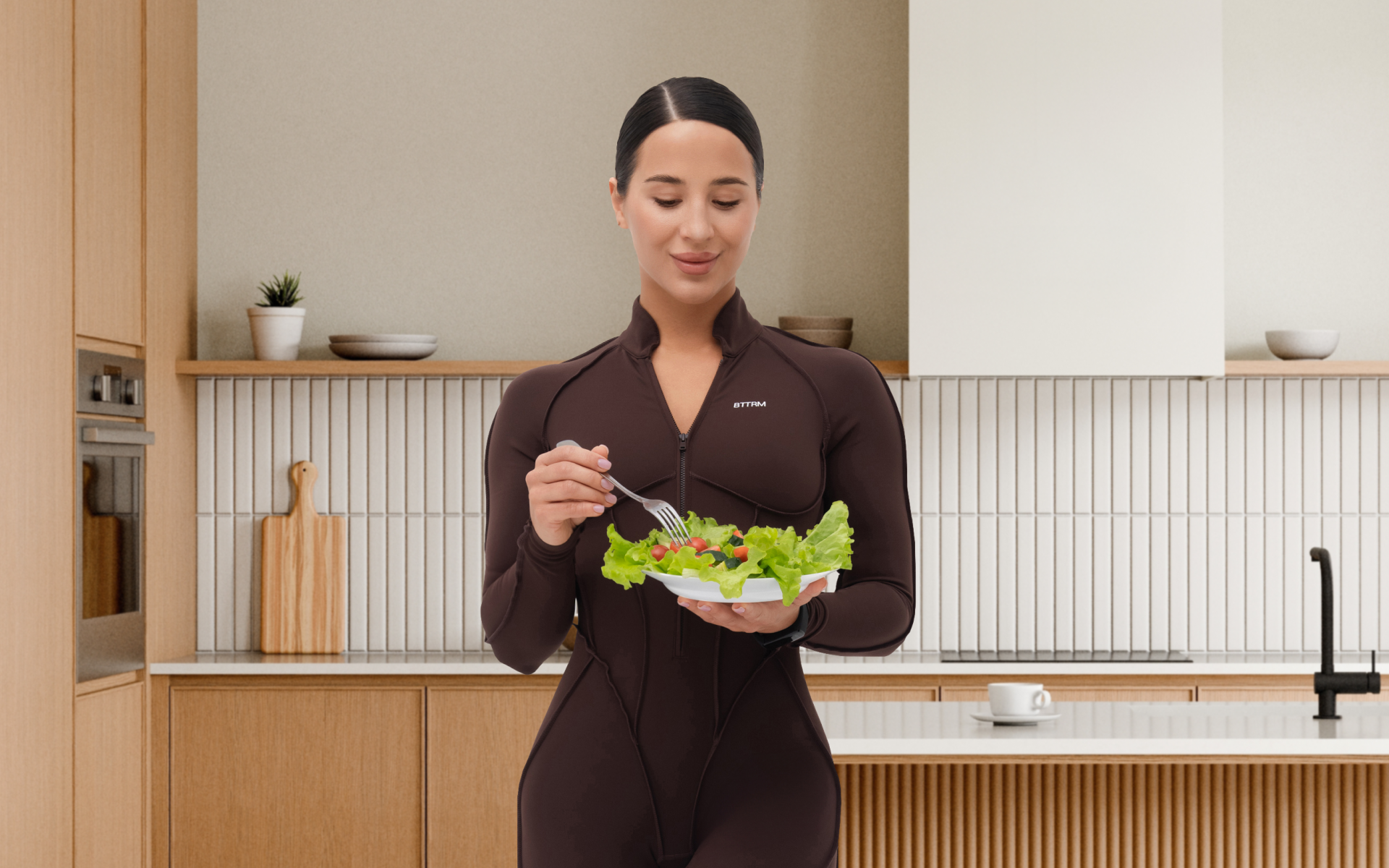There are many reasons you would want to start a meal plan. For example, chronic illnesses can be an emotional roller coaster. Conditions like obesity, hypertension, irritable bowel syndrome, diabetes, heart disease, fibromyalgia, and osteoporosis are global health challenges. Healthy eating could help curb some of the symptoms and avoid complications.
However, creating personalized meal plans involves understanding various nutritional requirements. Consider your nutrient needs, food sensitivities, eating habits, time restraints, and budget. The right tools and resources can offer practical guidance.
Here is a top-to-bottom breakdown of how to tweak your nutrition meal plan.
What Is a Way to Make Personalized Meal Plans?
Personalized meal plans require planning and prioritization.
You plan out your meals for the week and prioritize nutrient-dense foods. You use it to create a strategy for nutritious and balanced meals.
The most practical way to do that is to:
- Consider your dietary preferences
- Set the caloric intake to your needs
- Ensure a balance of macronutrients (fats, proteins, and carbs)
- Include a good amount of micronutrients (potassium, iron, vitamins, magnesium, etc)
- Adjust the portion sizes to meet your calorie and macronutrient targets
The meals should be enjoyable and nourishing. You can center them around a specific objective, such as muscle gain, weight reduction, disease prevention or management, energy levels, etc.
Need a muscle building meal plan? Check out The A-Z of Muscle-Gaining Meal Plans for Beginners.
When it comes to weight loss, progress is made by inches, not miles, so it’s much harder to track and a lot easier to give up. The BetterMe: Health Coaching app is your personal trainer, nutritionist, and support system all in one. Start using our app to stay on track and hold yourself accountable!
What Is a Personalized Meal Plan?
A custom meal plan is a dietary strategy unique to your nutritional needs, food preferences, health conditions, and lifestyle. It gives you structure and guidance on how to meet your dietary objectives.
Personalized meal plans may be helpful in many areas. It can help manage specific diseases or aid those who require exceptional nutritional support.
For example, a meal plan can aim to regulate blood pressure, reduce cravings, create a calorie deficit, improve muscle maintenance, support fetal development, etc.
Meal plans can also help you achieve peak performance in sports, fitness, weight loss, or overall well-being. They can provide a holistic approach to nutrition that’s more effective for long-term health.
Read more: 10 Plant-Based Diet Recipes for Beginners
Can I Create My Own Meal Plan?
Yes, you can create your meal plan.
But, to design the perfect strategy, you should consider your medical history, dietary limitations, food allergies, nutritional needs, weight, age, goals, and degree of physical activity.
Registered dietitians provide customized nutritional knowledge and solutions. Experts can analyze and dissect your eating habits. They assess your metabolic needs of micro and macronutrients. You get insight into building sustainable, long-term dietary changes.
Some specialize in educating about chronic digestive conditions such as Celiac disease, irritable bowel syndrome, Crohn’s disease, and more.
Others specialize in diabetes or chronic kidney disease management and other conditions where nutrition can play a role. They also can help support your overall health, including weight loss, quality of food, and meeting nutritional needs at every stage of life.
How Should a Beginner Start a Meal Plan?
Consider a variety of foods from various food groups that are appealing and accessible to you. Concentrate on diversifying your meals with a balance of nutrients. Then, plan the meals based on the food groups. Nutrient-dense foods may ensure optimal bodily function.
You can use various spices, herbs, condiments, and cooking methods to keep things interesting.
The tips below can help you get started.
Stock Your Kitchen & Pantry With Staples
Have a good base of basic ingredients to cook from scratch.
For example, stock up on:
- Rice
- Pasta
- Whole grains
- Eggs
- Milk
- Salad dressings
- Frozen veggies
- Canned and dried beans
- Soy sauce
- Pasta sauce
- Yogurt
- Mustard
- Mayonnaise
- Oils
- Vinegar
- Hot sauces
- Oats
- And more.
This variety allows you to put together simple meals on a busy day.
Plan Your Grocery Trips
Pick one day of the week for grocery shopping and food planning.
Write down all the recipes you want to make for the next few days. You should have a general idea of the ingredients you need.
The meals can be repetitive or innovative. Try to add as much diversity as possible in flavor, texture, toppings, and dressings.
Instead of picking something on a whim, check your cupboards first. Using what you already have can help you stick to the budget and reduce waste.
Visualize Your Meals
Do you want a customized diet plan for weight loss or to reach another goal? Many people are visual learners. Visualization may boost motivation to prioritize healthy eating. (1)
To start, visualize a table filled with nutritious and delicious recipes.
Envision a strong immune system, improved digestion, and any other health goals you have. The meals should nourish your body and aid your mental, physical, and emotional health.
What Are the 5 Basic Steps of Menu Planning?
Personalized meal plans can fit seamlessly into your daily routine. Unlike rigid diets, these meals are more sustainable, flexible, and adaptable to any lifestyle or preference. The steps below can set you on the right track.
Step 1 | Find Your Formula
Planning menus is different for everyone.
You can follow a specific eating style, such as Mediterranean, keto, paleo, kosher, low-carb, vegetarian, or vegan.
The style should consider your food allergies, insulin sensitivity, and gluten or lactose intolerance requirements.
Determine your daily macronutrient and calorie requirements based on your weight, fitness goals, height, activity level, and age. These bodily requirements can directly influence your body composition, energy balance, and health outcomes. (2)
Evaluate your dietary habits to minimize, manage, or prevent health conditions.
Specific components of a generic diet, especially meals high in salt, added sugar, and saturated fats, can harm health if over-consumed.
Excessive added sugar consumption appears to be one factor behind the obesity epidemic (3).
Your new meal plans should provide you with a strategy to mitigate the risk of health issues. The plan can support a specific health goal, such as improving blood sugar control, boosting energy levels, losing belly fat, reducing blood pressure, etc.
Consume sensible portions to avoid overeating. Make a weekly menu that includes a range of nutrient-dense foods.
Some top sources of priority micronutrients are:
- Eggs
- Beef
- Yogurt
- Lentils
- Beans
- Small fish
- Chickpeas
- Canned fish
- Organ meats
- Dark leafy greens
- And more.
Find a meal plan formula that works for you and that you can stick with long-term. (4)
Tip: Don’t trap yourself by unnecessarily cutting out entire food groups. You may develop nutrient deficiencies and feel exhausted and deprived. Instead, focus on the amount of food you consume. Use smaller bowls and dishes, or measure the quantity to maintain a calorie deficit.
Step 2 | Create a Master Menu
Create a template, then organize it into different categories throughout the week. You can fill in each category with various meals and grocery lists.
You can write it down on paper, phone, or computer.
Set aside at least 30 minutes to research recipes and list the foods you might miss. Consider some barriers, such as budget, convenience, travel, work, etc.
Here are a couple of examples:
- If you work long hours, and have many meetings, projects, or events, list meals that take 15 minutes or less. You can make salmon and spinach, grilled ham and cheese, avocado toast, tacos, canned tuna or sausage with leftover rice, etc.
- Suppose you have some friends coming over, so double the ingredients. Make a separate list of foods perfect for gatherings. These food items can include whole roast chicken with vegetables, casseroles, lasagna, salads, garlic bread, etc.
- If you need to manage a chronic condition, choose “safer” foods. You may prioritize vegetables, fruits, whole grains, and fish with lower consumption of ultra-processed products. Vegetable oils, legumes, nuts, and seeds might also help.
- If you want meal plans to lose weight, you may need to count the calories. Low-calorie meals are usually the first dietary strategy for curbing excess weight. (5)
- If you’re on a tight budget, add versatile ingredients to use every meal. Cupboard staples like sauces, broth, spices, dried herbs, and peanut butter can add flavor.
Read more: Creating A Diet Plan: A Detailed Playbook On Finding Your Own Dieting Rhythm
Step 3 | Make Meals With What You Have
Use readily available ingredients as an inspiration.
To minimize waste and keep a low food cost, use eggs, potatoes, canned chickpeas, canned tomatoes, soy sauce, dijon mustard, butter, milk, sour cream, frozen veggies, or anything else you have on hand.
Starches give you a filling base. You should have some pasta, oats, bread, or rice.
They contain complex carbs, making them a primary source of energy.
Protein varieties are equally important. It can come from meat, seafood, eggs, lentils, tofu, cottage cheese, and other foods.
The goal is to use all your leftovers. For example, you can turn:
- Rotisserie chicken into salads, tacos, chicken pot pies, soups, quesadillas, burritos, chicken, dumplings, or enchiladas
- Roasted cauliflower into soups, curries, or hash browns
- Boiled eggs into deviled eggs, egg salad, chopped salad, or pickled eggs
- Baked potatoes into mash, soup, salad, casseroles, etc.
The leftovers tend to last longer in soups and chilis.
You can portion and freeze the food, so you have multiple servings throughout the week without wasting the proteins or vegetables. Each meal plan should be adaptable and versatile.
Try to involve as many whole ingredients as you have. Create multiple dishes that satisfy your dietary needs and benefit your overall health.
The BetterMe app can show you the ropes. It provides tons of recipes and diverse meals for every palate. It streamlines the shopping process and makes planning a breeze, even for busy individuals.
Step 4 | Choose a Shopping Day
Now that you have all your meals planned, it is time to shop.
Most types of fresh produce won’t last a month, so many people prefer to shop weekly for produce and buy shelf-stable items in bulk. The day before, write down what you want to eat this week. The plan can be flexible but should give you a general guideline.
Keep the recipes simple, use products your household prefers, or plan for what’s on sale.
Let’s say you need four dinners — two of them you can eat fresh, and the other two are great for leftovers. This plan gives you dinners for six nights.
Stews, meatloaf, and casseroles are hearty leftover recipes.
Fish, sheet-pan dinners, and simple pasta are practical meals you can eat fresh.
You can use similar ingredients to create multiple affordable meals, mix and match throughout the week.
Write every meal on a spreadsheet or a calendar, and organize the ingredients by expiration date.
Take an inventory of what you already have. Prioritize the foods that expire sooner, like lettuce, fresh herbs, spinach, kale, mushrooms, berries, and hummus. Products like potatoes, rice, pasta, canned or frozen vegetables, and dry beans can last longer.
Hang the spreadsheet on the pantry door or fridge so you can skim through it and be ready to start shopping. Then, make a grocery list with the amount of food you need. Stick to your list and cross off products once you buy them.
Tip: Stock up on versatile ingredients with longer shelf lives. Consider a variety and balance of nutrients, vitamins, and minerals.
Step 5 | Prep and Store
Meal prep allows you to prepare food when you have time so that you can eat balanced meals for the rest of the week. It is not just about losing weight or eating healthier, it is about reducing stress after a long busy day.
You don’t have to scramble at breakfast, lunch, or dinner when you have meals ready. Weekly mealtime is easier when you plan everything with simple recipes.
Frozen meals can last several months, depending on the dish.
You can pre-cut your vegetables, pre-portion your grains or protein, or do some batch cooking. Most soups, stews, chili, burritos, and chicken enchiladas freeze well.
Invest in airtight containers of BPA-free plastic, glass, or stainless steel. Label the food and keep track of the date to keep it fresh. But make sure to store the food properly.
For example:
- Keep the pasta and sauce separate,
- Remove the meat from the original packaging,
- Take out the bones to reduce the volume,
- Freeze sausages, chops, steaks, and patties separately.
How Do I Create a Personalized Weight Loss Plan?
There isn’t a “one-site-fits-all” approach. The key to meal planning for weight loss is to tailor the strategy to your lifestyle, preferences, and particular needs.
To lose weight, you need to reduce your calorie intake or increase the calories you burn through physical activity. A diverse, nutritionally balanced diet may provide the necessary results. Simple things like smaller portions with high nutrient density and increasing movement throughout your day could help curb excess weight.
The BetterMe: Health Coaching app will provide you with a host of fat-frying fitness routines that’ll scare the extra pounds away and turn your body into a masterpiece! Get your life moving in the right direction with BetterMe!
What Is the Difference Between Menu Planning and a Meal Plan?
Menu planning is the cognitive process of selecting food products or services that meet your needs. The needs can vary, from cultural traditions to nutritional requirements, health problems, budget, taste, etc. You are planning a practical meal selection that caters to your overall dining experience.
Meal planning means you organize individual meals. You focus more on the recipes than the overall food menu. You can use it to speed up the cooking process and save time and money.
Which Is the Best Meal Planner App?
Don’t waste time feeling unsure about planning and shopping for every single dish.
The BetterMe app makes it easy to customize your diet according to your protein, carb, and fat goals. With the app, you get excellent nutritional tracking accuracy. Regardless of your goals, it is the best roadmap you can turn to for guidance and structure.
Nutritionists, dietitians, and nutritional apps can help customize your meal plans to your needs, but learning to do it for yourself is most beneficial. You can set realistic goals and pursue a balanced, nutritionally adequate, affordable, and effective dietary plan that you enjoy. Yes, meal plans can include detailed recipes. They specify the ingredients, cooking methods, and portion control. You can use them to stick to your macronutrient and calorie targets. Recipes can also add variety and simplify the cooking process. Planning the meals takes time, effort, and dedication. Meal planners can take the stress away, and more importantly, show you valuable techniques for cooking, preparation, and portion control. We designed The BetterMe app to simplify this process for you. You can use it to pick a base dietary regimen, scale up your meals, exclude ingredients, and achieve your goals. Avoid foods, condiments, or drinks you don’t tolerate that go against your dietary restrictions. For example, if you have a food allergy or sensitivity, you must avoid the foods or ingredients you are sensitive to. If you do not want to include animal products for religious or other personal reasons, you should avoid these food items in your meal plan. You don’t want to eliminate entire food groups without a particular reason, such as eating strictly gluten-free meals without Celiac disease. This food restriction can lead to nutrient deficiencies, making you feel deprived or triggering disordered eating. Frequently Asked Questions
Who designs meal plans?
Do meal plans include recipes?
Are meal planners worth it?
What should be avoided in planning meals?
The Bottom Line
You can create a sustainable approach for any health goal by incorporating various strategies into your meal planning routine. Whether you need to lose weight, manage a health condition, or just for convenience, customizing meal plans can enhance and simplify your dietary choices.
DISCLAIMER:
This article is intended for general informational purposes only and does not serve to address individual circumstances. It is not a substitute for professional advice or help and should not be relied on for making any kind of decision-making. Any action taken as a direct or indirect result of the information in this article is entirely at your own risk and is your sole responsibility.
BetterMe, its content staff, and its medical advisors accept no responsibility for inaccuracies, errors, misstatements, inconsistencies, or omissions and specifically disclaim any liability, loss or risk, personal, professional or otherwise, which may be incurred as a consequence, directly or indirectly, of the use and/or application of any content.
You should always seek the advice of your physician or other qualified health provider with any questions you may have regarding a medical condition or your specific situation. Never disregard professional medical advice or delay seeking it because of BetterMe content. If you suspect or think you may have a medical emergency, call your doctor.
SOURCES:
- A Systematic Review on Visualizations for Self-Generated Health Data for Daily Activities (2022, ncbi.nlm.nih.gov)
- Nutrition: Macronutrient Intake, Imbalances, and Interventions (2023, ncbi.nlm.nih.gov)
- U.S. obesity as delayed effect of excess sugar (2020, sciencedirect.com)
- Priority Micronutrient Density in Foods (2022, ncbi.nlm.nih.gov)
- Optimal Diet Strategies for Weight Loss and Weight Loss Maintenance (2020, ncbi.nlm.nih.gov)
- The effect of dietary carbohydrate and calorie restriction on weight and metabolic health in overweight/obese individuals: a multi-center randomized controlled trial (2023, ncbi.nlm.nih.gov)

